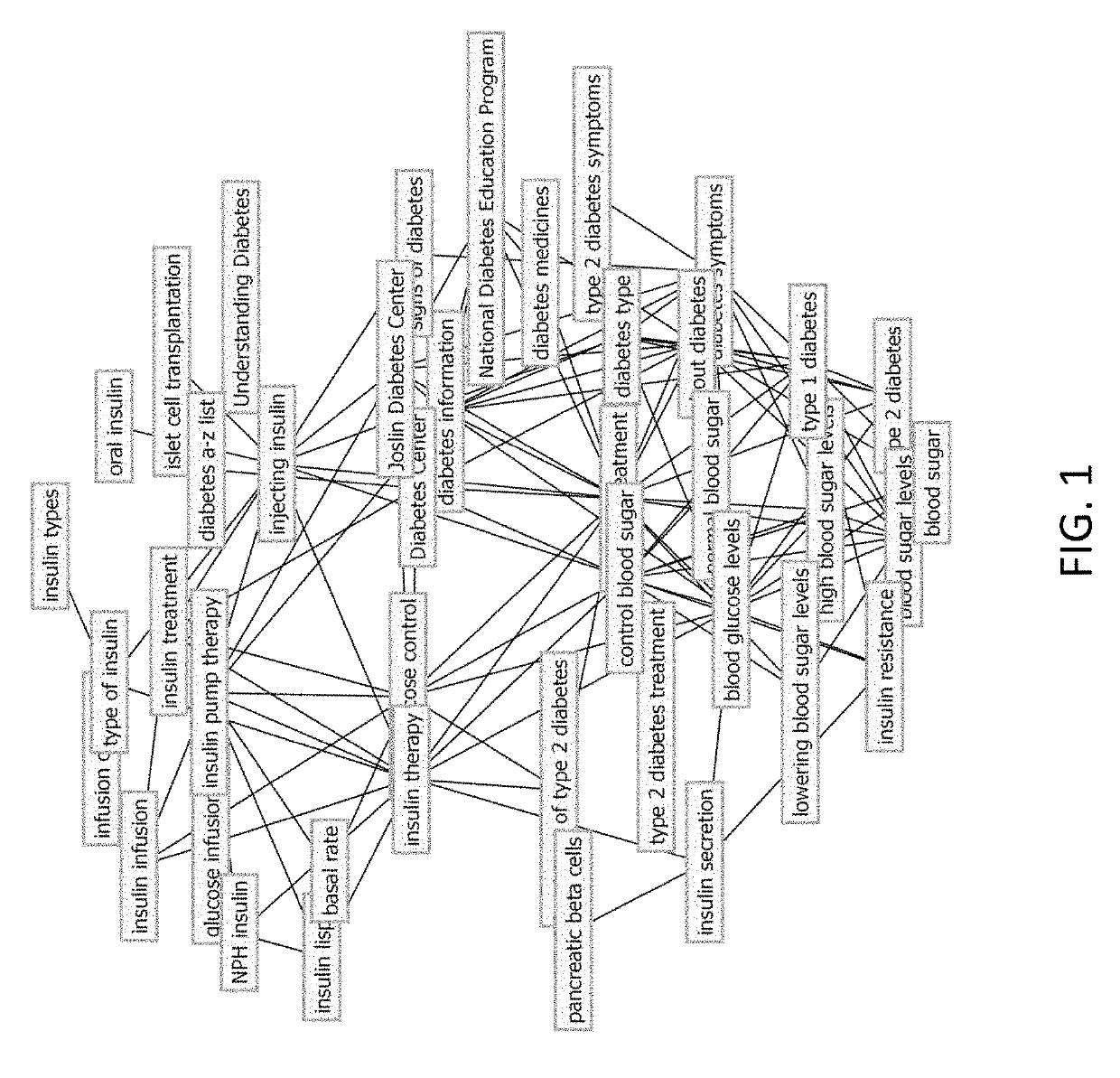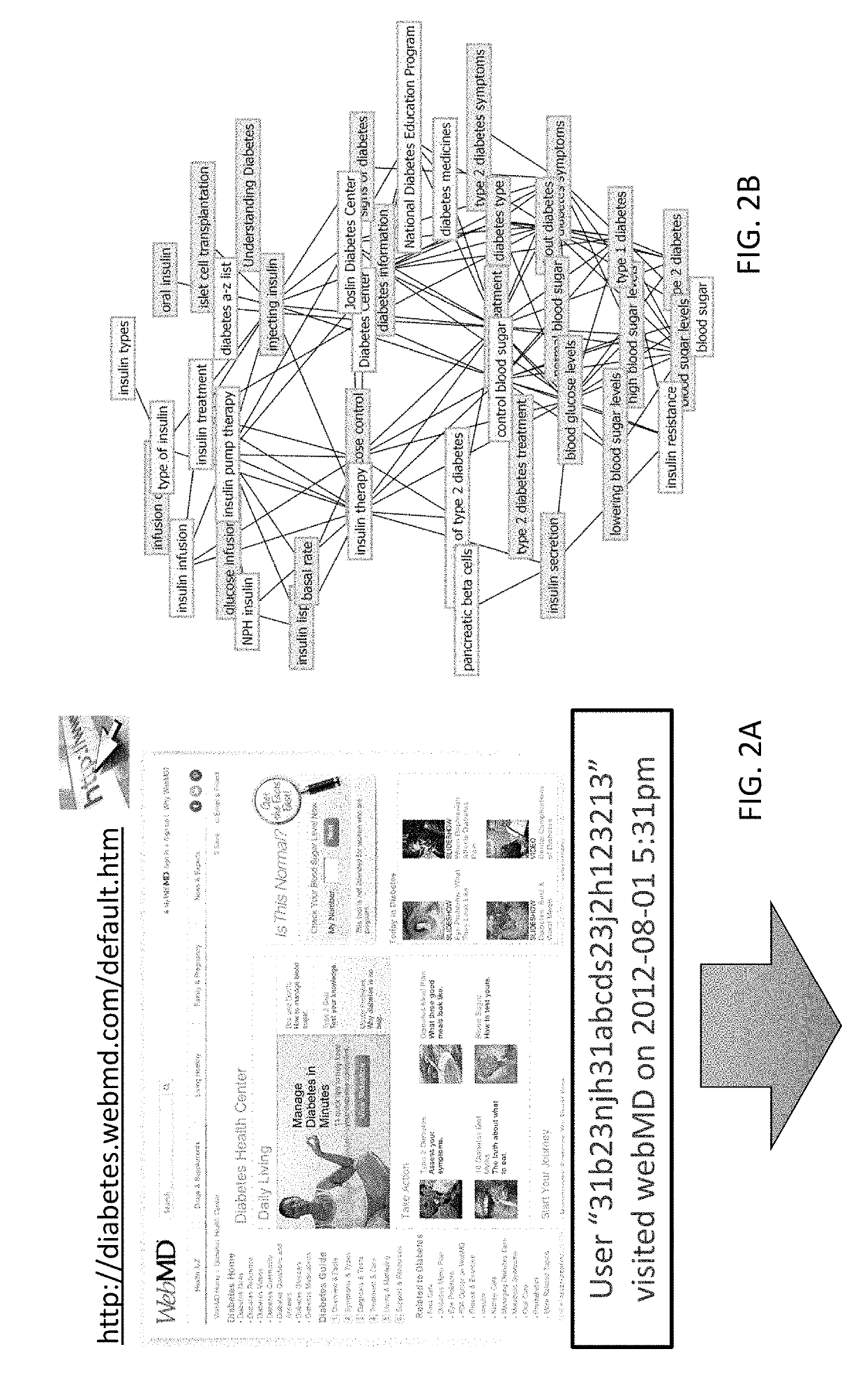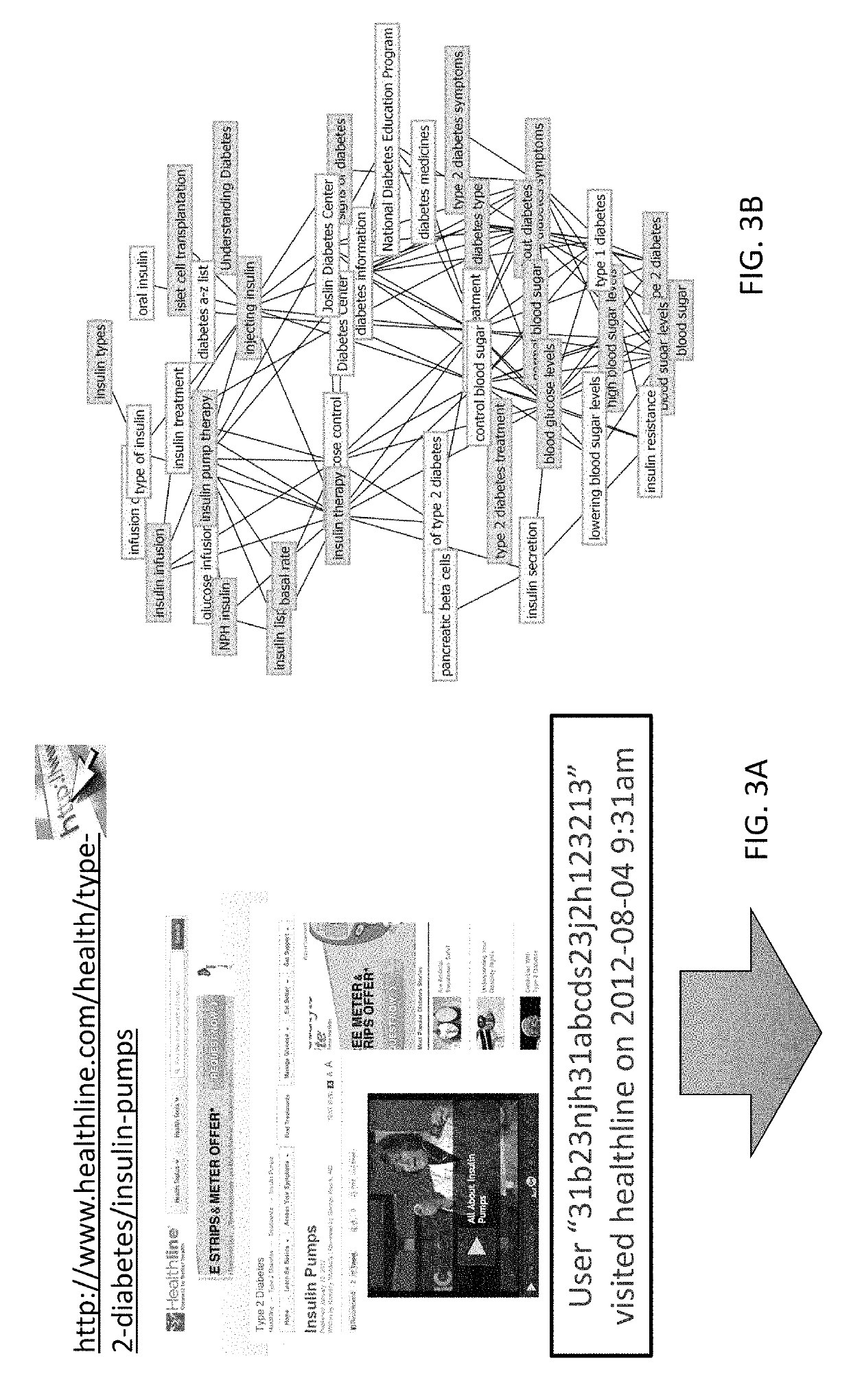Concept-level user intent profile extraction and applications
a user intent and concept-level technology, applied in the field of concept-level user intent profile extraction and applications, can solve the problems of insufficient comprehensive and computationally scalable solutions, and the expressive capabilities of such explicitly stated categories are known to be very limited in accurately characterizing user intent and profile, and achieves high-granular concept-level expressiveness, unprecedented accuracy and detail
- Summary
- Abstract
- Description
- Claims
- Application Information
AI Technical Summary
Benefits of technology
Problems solved by technology
Method used
Image
Examples
example 1
Percolation Community Finding Approach
[0050]In this section a social definition of communities is adopted, showing that percolation identifies communities of a given vertex compared to previous diffusion based algorithms. Next, essentials and performance of the algorithm on ER random graphs are illustrated.
A. Social Communities Revisited
[0051]While other definitions provide important insight into partitioning of the graph, a more local approach is chosen herein. Unlike cohesive community definitions, Garton et. al. [8] define communities as follows. In social network analysis context, a group is an empirically-discovered structure. By examining the pattern of relationships among members of a population, groups emerge as highly interconnected sets of actors known as cliques and clusters. In network analytic language, they are densely-knit (most possibilities exist) and tightly-bounded, i.e., most relevant ties stay within the defined network [18-20]. Social network analysts then want...
PUM
 Login to View More
Login to View More Abstract
Description
Claims
Application Information
 Login to View More
Login to View More - R&D
- Intellectual Property
- Life Sciences
- Materials
- Tech Scout
- Unparalleled Data Quality
- Higher Quality Content
- 60% Fewer Hallucinations
Browse by: Latest US Patents, China's latest patents, Technical Efficacy Thesaurus, Application Domain, Technology Topic, Popular Technical Reports.
© 2025 PatSnap. All rights reserved.Legal|Privacy policy|Modern Slavery Act Transparency Statement|Sitemap|About US| Contact US: help@patsnap.com



